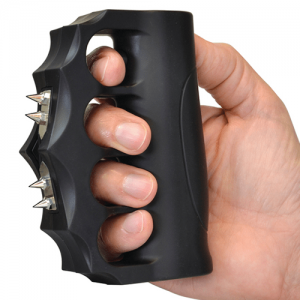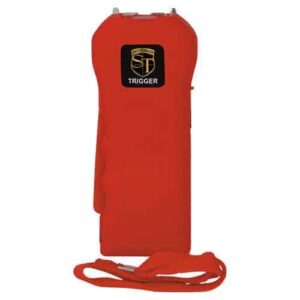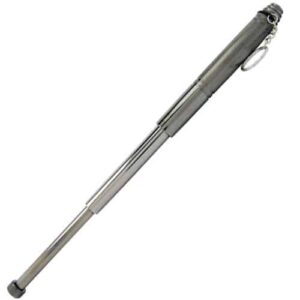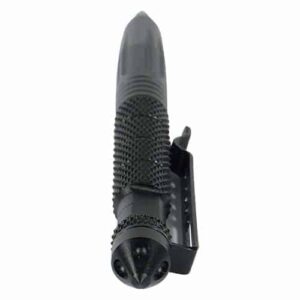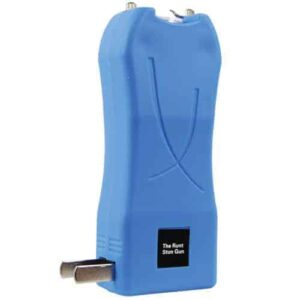If you’ve ever considered a career in law enforcement or personal safety, becoming a Certified Taser Instructor could be the perfect path for you. With taser instructor courses designed to equip you with the necessary knowledge and skills, you’ll be empowered to educate and train others on the safe and effective use of this non-lethal self-defense tool. As a Certified Taser Instructor, you’ll play a vital role in promoting community safety and ensuring individuals have the confidence to protect themselves and those around them.
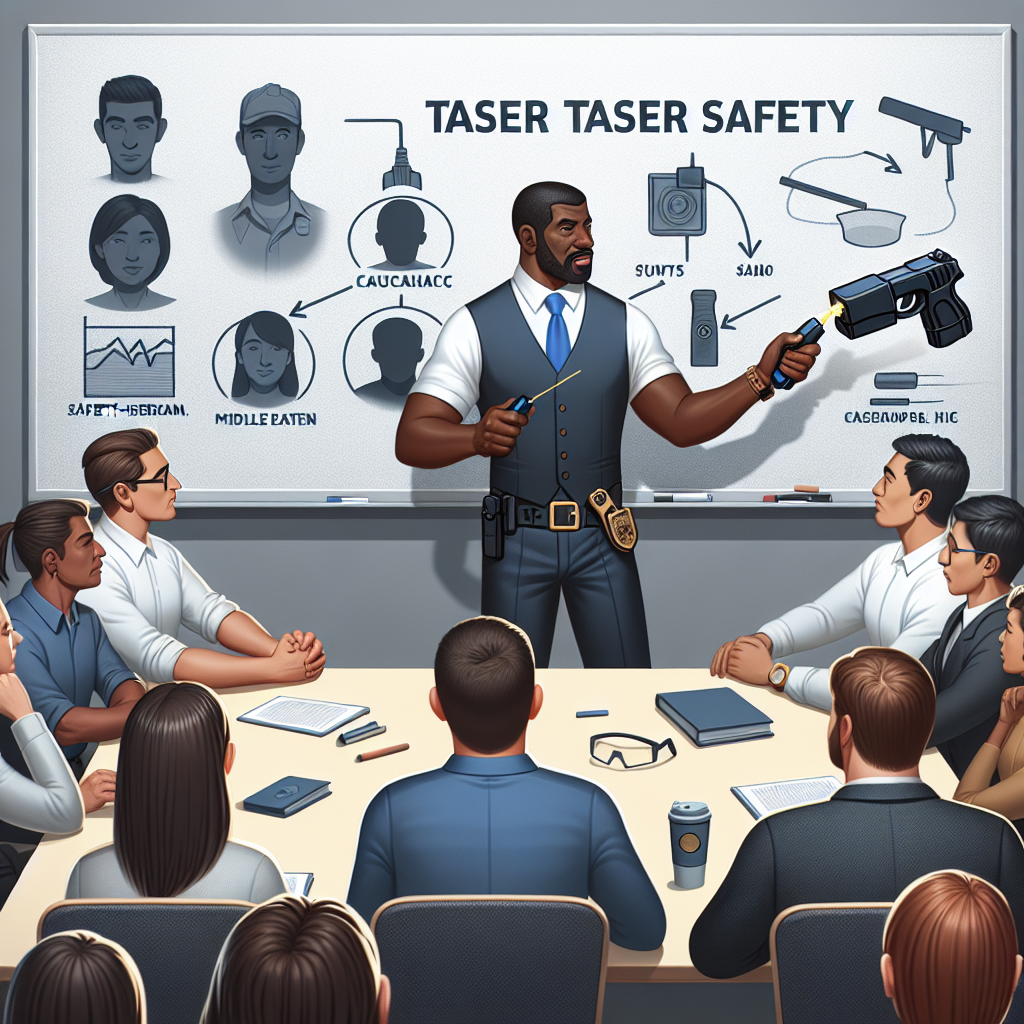
Table of Contents
ToggleOverview of Taser Instructor Certification
What is a Taser Instructor Certification?
A Taser Instructor Certification is a specialized training program designed to equip individuals with the necessary knowledge and skills to effectively teach others how to use a Taser device safely and responsibly. As a certified Taser instructor, you will have the authority to educate law enforcement officials, security personnel, and other individuals in the proper use of these non-lethal weapons.
Why become a Certified Taser Instructor?
Becoming a certified Taser instructor offers numerous benefits. Firstly, it allows you to play a crucial role in promoting safety and responsible weapon usage within your community. By imparting your expertise, you can ensure that individuals who carry Tasers are aware of their capabilities, limitations, and potential risks. Additionally, being a certified Taser instructor can open doors to exciting career opportunities, such as working with law enforcement agencies, private security companies, educational institutions, or even starting your own consulting and training firm.
Benefits of Taser Instructor Certification
Obtaining Taser Instructor Certification comes with a range of benefits. Alongside the opportunity to make a positive impact on public safety, certification can enhance your professional reputation and credibility. Being recognized as a certified instructor demonstrates expertise and a commitment to ongoing professional development. This can lead to increased job prospects, higher earning potential, and the chance to be at the forefront of advancements in Taser technology and training methods.
Prerequisites for Taser Instructor Certification
Law Enforcement Requirement
To be eligible for Taser Instructor Certification, many programs require applicants to have a background in law enforcement or security. This requirement ensures that candidates have a solid understanding of the industry, including its protocols, procedures, and ethical considerations. This prerequisite is crucial as it helps instructors establish credibility and instills confidence among their trainees.
Educational Background
While not always a strict requirement, possessing a certain level of education, such as a high school diploma or equivalent, can be beneficial when applying for Taser Instructor Certification. A solid educational foundation demonstrates commitment and the ability to grasp complex concepts necessary for effective teaching.
Experience in Law Enforcement or Security
Experience in law enforcement or security is highly valued when applying for Taser Instructor Certification. Real-world experience equips instructors with the practical knowledge and insights necessary to address trainees’ concerns and prepare them for the challenges they may face on the job. This experience also allows instructors to share personal stories, providing valuable context and enhancing the overall learning experience.
Other Requirements
Specific certification programs may have additional requirements, such as minimum age restrictions, physical fitness standards, or current certifications in first aid or firearms training. These requirements vary, so it is essential to thoroughly research the specific program you are interested in to ensure you meet all the necessary criteria.
Selecting the Right Taser Instructor Course
Researching Available Courses
When choosing a Taser Instructor course, it is vital to conduct thorough research to find the program that best suits your needs and goals. Consider factors such as reputation, testimonials from previous participants, and the program’s standing within the industry. Look for courses that have a strong track record of producing knowledgeable and effective instructors.
Course Curriculum and Content
Examine the curriculum and content of the Taser Instructor course to ensure it covers all the essential topics and provides a comprehensive understanding of Taser devices and their usage. The curriculum should include both theoretical and practical components, addressing topics such as Taser functionality, deployment techniques, legal considerations, and use of force standards. A well-rounded curriculum ensures that you are equipped with the knowledge and skills required to be an effective instructor.
Trainer’s Qualifications
Take into consideration the qualifications of the trainers leading the course. Look for trainers who have extensive experience in law enforcement or security and possess relevant certifications. Trainers with a strong background in teaching or instructional design can provide valuable insights and guidance on effective training techniques.
Cost and Duration of the Course
Consider the cost and duration of the Taser Instructor course to ensure it aligns with your budget and schedule. While it is essential to weigh these factors, remember that quality training is an investment in your professional development. Choosing a course solely based on cost may result in a subpar learning experience and may not adequately prepare you for the responsibilities of being a Taser instructor.
Enrolling in a Taser Instructor Course
Application Process
The application process for a Taser Instructor course typically involves completing an application form and submitting it to the training provider. Some programs may also require a personal statement or essay outlining your motivations and qualifications for becoming a Taser instructor. It is important to carefully follow the instructions provided by the training provider to ensure your application is considered.
Registration and Fees
Once your application is accepted, you will be required to register for the course and pay the necessary fees. The registration process may involve providing personal information, such as your contact details and identification documents. It is advisable to register as early as possible to secure a spot in the desired course, as some programs have limited availability.
Required Documentation
In addition to the application, you may be required to submit certain documentation to verify your eligibility for the Taser Instructor course. This may include proof of education, certifications in relevant fields, and documentation that supports your law enforcement or security experience. Ensure you gather and submit all required documents promptly to avoid any delays in the enrollment process.
Background Check
As part of the certification process, you may be subjected to a background check to assess your suitability for becoming a Taser instructor. This check typically involves a review of your criminal history, employment records, and references. Applicants with a history of illegal or unethical behavior may be disqualified from becoming certified.
Training and Curriculum
Classroom Instruction
Taser Instructor courses typically include extensive classroom instruction to provide participants with a solid theoretical foundation. Topics covered may include the history and development of Taser devices, legal regulations and policies related to their use, and the physiological effects of Taser deployment. Classroom instruction facilitates a comprehensive understanding of the subject matter and allows for in-depth discussions and knowledge sharing among instructors and trainees.
Practical Hands-on Training
In addition to classroom instruction, practical hands-on training is a crucial component of Taser Instructor courses. Participants have the opportunity to familiarize themselves with different Taser models, practice correct deployment techniques, and assess the effects of Taser use through realistic scenarios. Practical training allows instructors to develop their skills in a safe and controlled environment, ensuring they are adequately prepared to teach trainees in real-world settings.
Firearm Safety and Handling
As part of Taser Instructor training, participants are often required to have a solid understanding of firearm safety and handling. This knowledge is essential, as many law enforcement agencies and security organizations utilize both Tasers and firearms. Instructors learn how to effectively teach trainees the safe and responsible handling of both types of weapons, emphasizing the differences in deployment methods and necessary precautions.
Taser Operational Principles
Taser Instructor courses provide detailed instruction on the operational principles behind Taser devices. Instructors learn about the technology used in Tasers, such as electrical output, probe deployment, and the physiological effects on the human body. Understanding these principles allows instructors to confidently explain the mechanisms of Taser devices to trainees, ensuring they have a comprehensive understanding of the weapons they will be using.
Understanding Taser Devices
Different Types of Taser Devices
Taser Instructor courses educate participants on the various types of Taser devices available in the market. This includes handheld models, as well as less-lethal shotgun and rifle attachments. Instructors become familiar with the features, capabilities, and limitations of each device, enabling them to provide accurate guidance on the selection and use of different models based on specific scenarios and target audiences.
Taser Functionality and Modes
A key aspect of Taser Instructor training is understanding the functionality and modes of operation of Taser devices. Instructors learn about the different modes, such as stun, drive-stun, and probe modes, and how each affects the deployment and effectiveness of Tasers. This knowledge allows instructors to tailor their training to meet the needs and requirements of their trainees, ensuring they are well-versed in the proper use of different modes and understand the potential outcomes of each.
Taser Components and Maintenance
To effectively teach others about Taser devices, instructors must have a comprehensive understanding of their components and maintenance requirements. Through their training, instructors are familiarized with the internal and external components of Tasers, such as the battery, cartridge, and probes, as well as troubleshooting and maintenance procedures. This knowledge enables instructors to confidently answer trainees’ questions and provide guidance on proper device care and functionality.
Understanding Taser Deployment and Effects
Instructors must possess deep knowledge of the deployment process and effects of Taser devices to educate trainees effectively. They learn about the factors that may affect the deployment, such as distance, angle, and target clothing, and how to maximize the chances of successful deployment. Instructors are also trained to address trainees’ concerns about the potential effects of Taser use on individuals, including considerations for vulnerable populations and potential risks associated with the weapon’s deployment.
Developing Training Techniques
Effective Instructional Methods
Aspiring Taser instructors learn various techniques to enhance their instructional capabilities. They explore different teaching styles, such as lecture-based, interactive, and scenario-based methods. Instructors also learn how to effectively utilize multimedia resources, including videos, presentations, and practical demonstrations, to engage their trainees and reinforce learning outcomes. Through effective instructional methods, instructors can create a positive and impactful learning environment.
Creating Engaging and Interactive Lessons
To ensure trainees absorb and retain important information, Taser instructors are taught how to create engaging and interactive lessons. This may involve incorporating group discussions, case studies, and interactive exercises that simulate real-world scenarios. By actively involving trainees in the learning process, instructors encourage critical thinking, problem-solving, and effective decision-making skills when it comes to the use of Taser devices.
Teaching Proper Taser Use and Safety
One of the essential responsibilities of a Taser instructor is teaching proper Taser use and safety. Instructors are trained to effectively communicate safety protocols, emphasizing the importance of responsible Taser deployment. They guide trainees on the correct grip, stance, and aiming techniques to maximize effectiveness and minimize risk. Instructors also cover best practices for storing and carrying Tasers to prevent accidents or misuse.
Addressing Common Trainee Challenges
During the training process, Taser instructors gain insight into the common challenges trainees may face when learning to use Taser devices. Instructors learn how to address trainees’ doubts, fears, and misconceptions surrounding Tasers while providing support and guidance. They develop strategies to create a non-judgmental and inclusive learning environment, ensuring that every trainee feels comfortable and confident in their ability to use Tasers responsibly.
Teaching Taser Policies and Legal Considerations
Understanding Use of Force Standards
Taser instructors must have a comprehensive understanding of use of force standards to teach trainees about the appropriate and lawful use of Taser devices. Instructors learn about the continuum of force and the factors that determine the level of force appropriate in different scenarios. They also explore the legal requirements and limitations on the use of Tasers, ensuring that trainees are equipped with the necessary knowledge to make informed decisions regarding force deployment.
Legal Implications and Liabilities
Instructors delve into the legal implications and liabilities associated with Taser use. They study case law, statutes, and evolving legal standards, providing trainees with a comprehensive understanding of the potential legal ramifications of improper Taser deployment. Instructors help trainees navigate the complex legal landscape and develop strategies for minimizing legal risks while ensuring effective and ethical use of Tasers.
Teaching Ethical and Responsible Taser Use
Ethics and responsibility play a vital role in Taser Instructor certification. Instructors educate trainees on the ethical considerations associated with Taser use, emphasizing the critical importance of respect for human rights, fairness, and proportionality. They guide trainees on making informed, ethical decisions, and promote a sense of accountability for their actions. By embedding these principles within their training, instructors impart a deep understanding of responsible Taser usage.
Policy Development and Implementation
Instructors are trained to assist organizations in developing policies and procedures related to the use of Taser devices. They learn to analyze organizational needs and assess the legal and ethical considerations necessary for creating comprehensive policies. By imparting policy development and implementation skills, instructors ensure that trainees are equipped to integrate Taser usage within the broader framework of organizational policies and guidelines.
Assessment and Certification Process
Written Examinations
Taser Instructor courses often include written examinations to assess participants’ knowledge retention and comprehension of the course material. These examinations typically cover theoretical concepts, operational principles of Taser devices, legal considerations, and proper use of force standards. Participants must demonstrate their understanding of key concepts and effectively apply their knowledge in various scenarios to successfully pass the written examinations.
Practical Demonstrations
In addition to written exams, Taser Instructor courses frequently include practical demonstrations to evaluate participants’ practical proficiency in Taser deployment. Participants are assessed on their ability to handle and deploy Tasers correctly, safely, and effectively. Practical demonstrations may involve live scenarios or simulations to replicate real-world conditions. Instructors provide feedback and guidance to help participants improve their skills and ensure they meet the required standards.
Evaluation and Feedback
Throughout the course, participants receive ongoing evaluation and feedback from instructors. This feedback serves to highlight areas of strength and areas that may need further improvement. Instructors assess participants’ professionalism, communication skills, and ability to effectively transfer knowledge to trainees. Through this evaluative process, participants gain valuable insights into their instructional techniques and receive guidance on how to refine their teaching methods.
Certification Renewal and Continuing Education
Taser Instructor certification is typically valid for a specific period, and renewals are required to uphold the certification status. Instructors must actively engage in continuing education to stay up-to-date with changes in Taser technology, legal standards, and best practices. Renewal requirements often include participating in refresher courses, attending seminars or conferences, and completing ongoing professional development activities. Certification renewal ensures that instructors remain knowledgeable and capable of delivering high-quality training.
Career Opportunities for Certified Taser Instructors
Law Enforcement Agencies
Certified Taser instructors often find lucrative career opportunities within law enforcement agencies. They can contribute to their organization’s training programs, educating officers on the proper use of Tasers and ensuring compliance with departmental policies and legal standards. Instructors may also have the opportunity to develop and revise training curricula to align with emerging industry trends and advancements in Taser technology.
Private Security Companies
The demand for certified Taser instructors within private security companies is on the rise. As a certified instructor, you can be instrumental in preparing security personnel to effectively utilize Tasers as part of their duties. By training security officers on safe and proper Taser deployment, you help enhance their preparedness for potential security incidents, contributing to improved safety within private sector establishments.
Educational Institutions
Educational institutions require Taser instructors to train future law enforcement professionals and security personnel. Instructors can be employed by police academies, college and university criminal justice programs, or vocational training institutes. As an instructor, you play a pivotal role in shaping the next generation of law enforcement professionals, ensuring they possess the skills and knowledge necessary to safely and responsibly use Tasers.
Consulting and Training Firms
Certified Taser instructors have the option to establish their own consulting and training firms. By leveraging their expertise and industry experience, instructors can provide customized training programs for law enforcement agencies, security companies, and other organizations. This entrepreneurial pathway allows instructors to have autonomy over their training methods, content, and business operations while making a meaningful impact on public safety.
In conclusion, becoming a certified Taser instructor opens doors to exciting career opportunities, provides a chance to promote safety and responsible weapon usage, and enhances professional reputation and credibility. By meeting the prerequisites, selecting the right course, enrolling, and completing comprehensive training, individuals can embark on a rewarding career path that positively influences individuals and communities.


